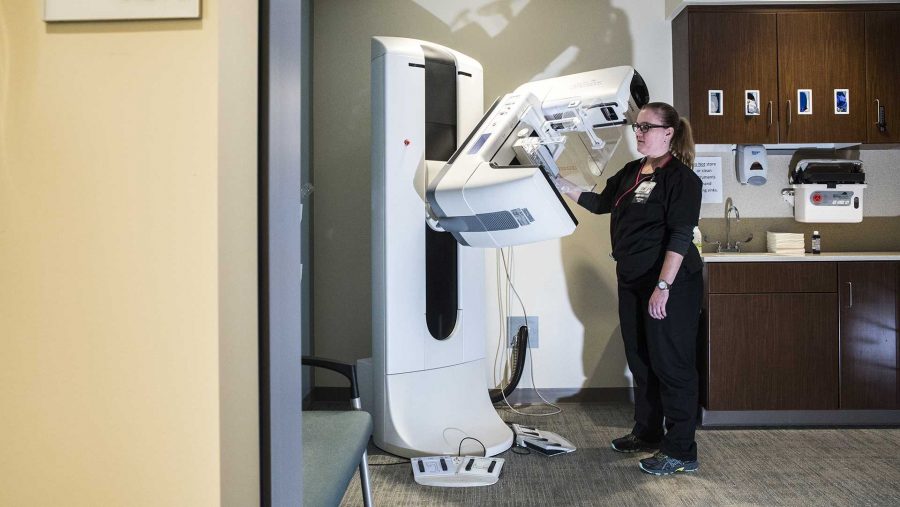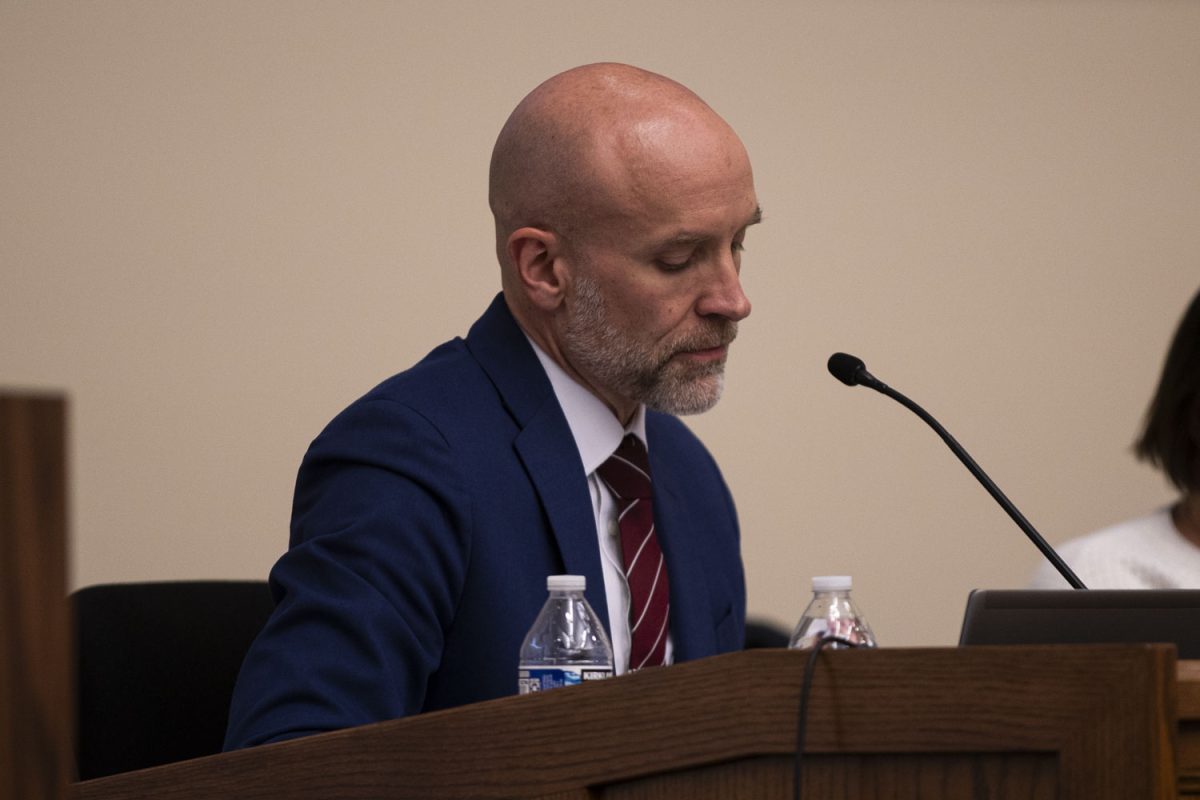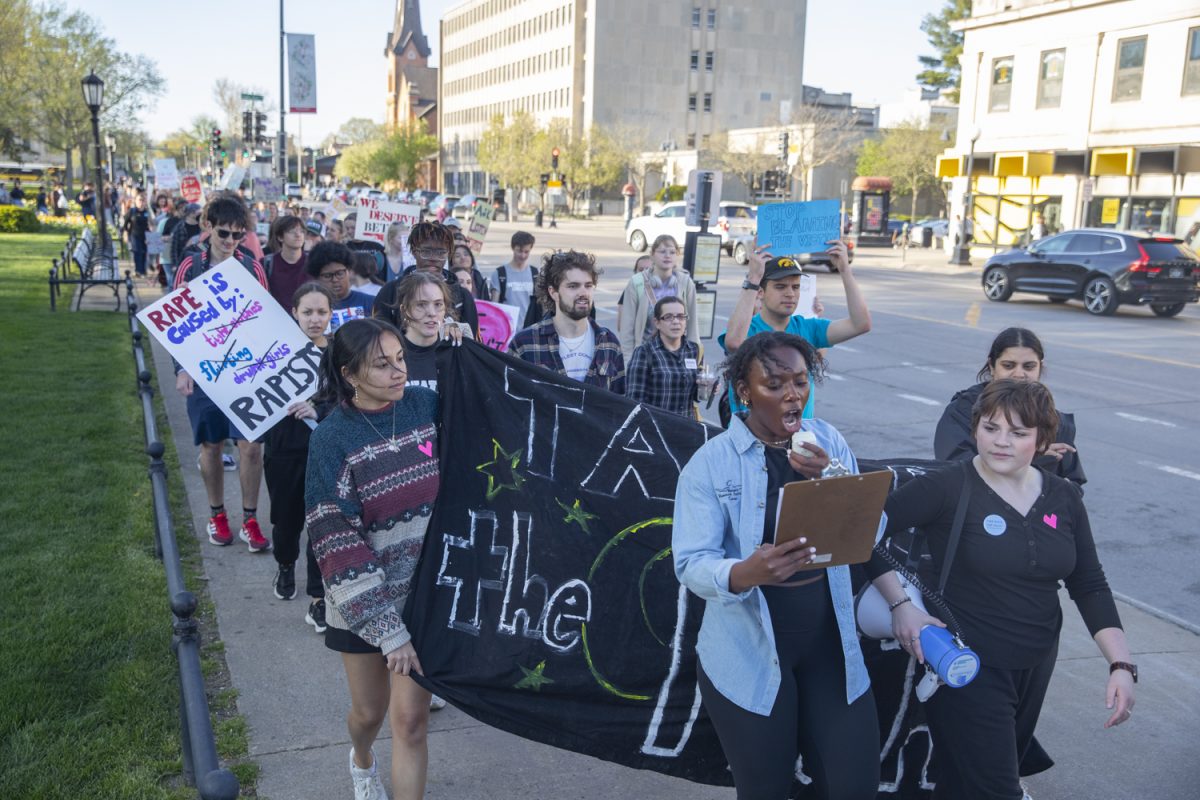The UI offers many unique breast-cancer treatments for its patients, each with her unique needs.
By Kayli Reese
[email protected]
At the University of Iowa Hospitals and Clinics, a team of medical professionals is dedicated to helping breast cancer patients in the Iowa Holden Comprehensive Cancer Center.
Throughout the treatment process, the breast-cancer team works hard to ensure every patient has the resources available to thrive.
Having screenings to see whether one is at risk to develop breast cancer is very important, said Cancer Center genetic counselor Krysten Shipley. By beginning breast-cancer screening around the age of 25, she said, women can be proactive in their potential treatments, a new benefit of advanced technology to assess risk.
“The two biggest risks [for getting breast cancer] are being female and aging,” Shipley said. “There are some hormone factors as well, but there is no particular thing to point to, unfortunately.”
Shipley said she looks at reasons breast cancer has developed or risk factors for women through genes. Five to 10 percent of breast-cancer cases are inherited, she said.
Everyone has one copy of genes from their mother and one from their father, Shipley said. When one gene changes in a cell, one is at higher risk for the cell to become cancerous.
BRCA genes are the ones focused on most, she said. Mutations in these genes create higher risk for cancer, she said, because they are tumor suppressors. If they develop mutations, they no longer do their job, which allows tumor growth.
If someone has a BRCA1 mutation, the risk of developing breast cancer is 50 to 78 percent, Shipley said. The mutation also increases the risk of ovarian cancer, she noted, from 1 to 2 percent to 20 percent. A BRCA2 mutation gives a breast-cancer risk of 10 to 20 percent, she said.
Under half of inheritance-caused breast cancer comes from a BRCA gene, Shipley said, with the other half coming from other genes. In the 1990s, she said, genetic testing only could test the BRCA gene. Now, testing has expanded, and other genes can be tested to see if they have potential to cause breast cancer.
Women should not just speak to their doctors about breast-cancer risk, Shipley said, but also their families, which she believes is not so taboo to do anymore.
“We want to focus on the whole family,” she said. “We always want to see what [breast-cancer risk in one person] means for others.”
After being screened and seeing where breast cancer may have come from, the treatment options for UIHC patients can be overwhelming, said UI Clinical Assistant Professor Sneha Phadke, a medical oncologist.
“It’s helpful to talk to our tumor board,” she said. “That way, everyone is on the same page.”
The number of options at the UIHC only benefits patients by taking care of the root of the issue, said Ingrid Lizarraga, a UI clinical assistant professor of oncology.
“If we have everything, we can look at everything,” she said.
After a patient sees a radiologist for screening or to spot lumps, Lizarraga said, a one-time biopsy is performed to see if a patient has breast cancer. If so, she said, surgeons explain how to proceed.
RELATED: Area police join Pink Patch project
A lumpectomy or mastectomy are the surgeries commonly employed, Lizarraga said. A lumpectomy involves only taking the cancerous parts of the breast out, and it can involve some plastic surgery to reshape the breast. In a mastectomy, the whole breast is removed. If a patient chooses to reshape the breast after a mastectomy, she said, the UIHC has options to do so.
Typically, Phadke said, patients see a surgeon first, have surgery, and then have systemic treatments. If the surgery is smaller, however, systemic treatments can be done first, she said.
In systemic treatments, Phadke said, the whole body is treated to prevent cancer spreading, and patients are followed for five to 10 years afterwards.
Thirty years ago, Phadke said, all women went through chemotherapy, but now, 70 percent of women undergo anti-estrogen therapy and only some undergo chemotherapy.
A little more than half of the UIHC breast-cancer patients come from outside of Iowa, Lizarraga said, meaning the hospital must provide the best care before, during, and after treatment.
“We know we provide good care,” she said. “We need to make sure we provide a good experience.”
Some of the options contributing to a positive experience involve patients learning how to care for themselves after treatment. Phadke said, for example, the hospital houses a survivorship clinic, in which patients can learn about potential medical side effects of treatments and work on positive body image and intimacy insecurities.
“Women have to own their breast health,” Lizarraga said.
A free nutritionist is also available to help patients, she said, because patients who gain weight don’t do as well during treatment. Speaking to a psychologist is also recommended, Phadke said, because life likely won’t be the same after a breast-cancer diagnoses. This is especially true for younger women not expecting such a diagnosis, because cases of breast cancer among young women are rare.
By having doctors involved in breast-cancer treatment speak at colleges such as the UI, Lizarraga said, younger women can see the risk factors they may have for breast cancer. Because young women aren’t often told to be tested for risks, they don’t think about it, she said, so highlighting the issue gives women a leg up in preventing cancer and taking care of themselves.
“It’s not acceptable to save a life,” Lizarraga said. “We need to give women happy, full lives.”







